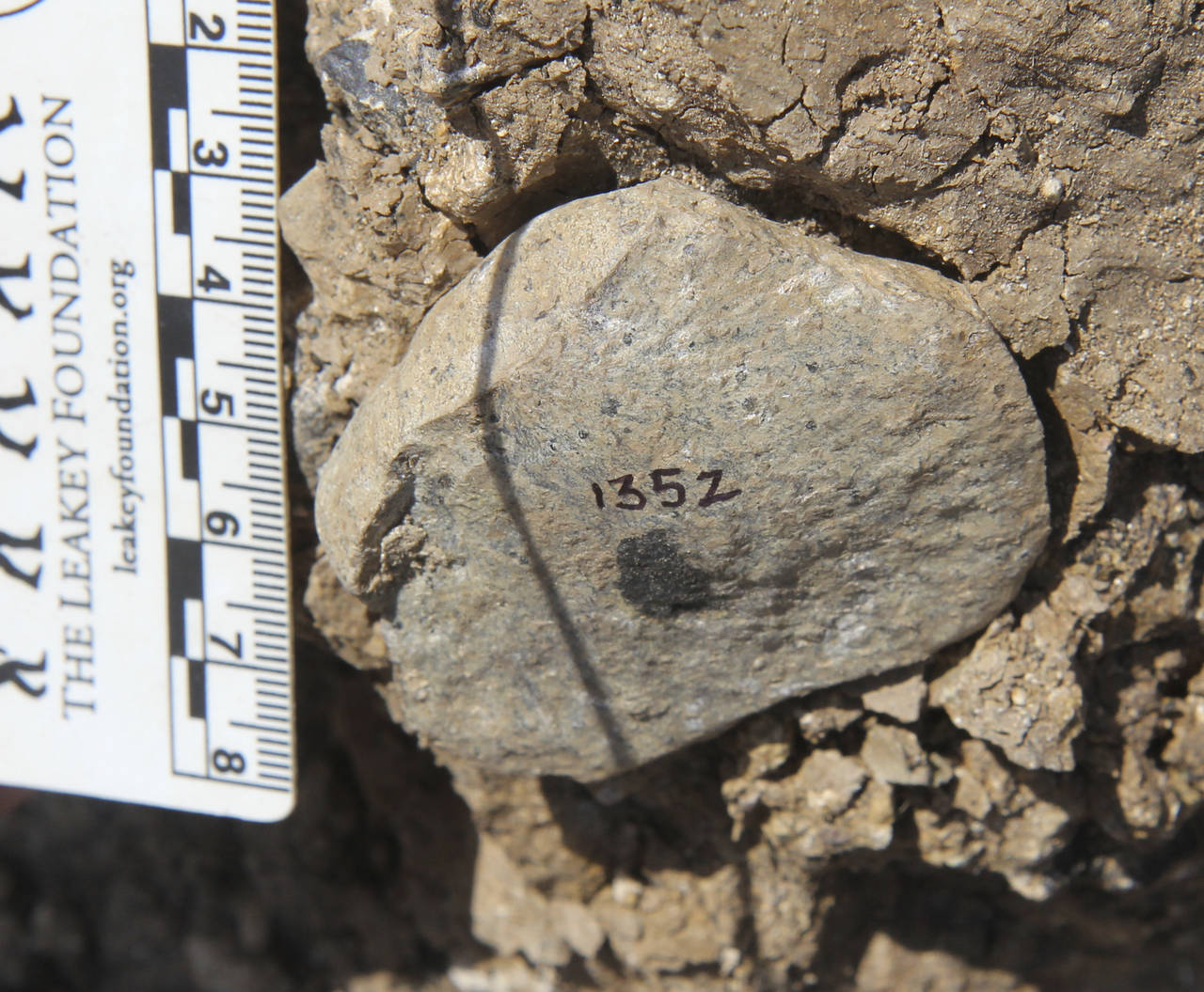Stone Age discovery fuels mystery of who made early tools
Feb 8, 2023, 9:02 PM | Updated: Feb 9, 2023, 12:51 pm

This photo provided by the Homa Peninsula Paleoanthropology Project shows an Oldowan flake at the Nyayanga site in southwestern Kenya in 2017. Archaeologists in Kenya have dug up some of the oldest stone tools ever found, dating back to around 2.9 million years ago, but who used them is a mystery, according to a study published Thursday, Feb. 9, 2023, in the journal Science. (T.W. Plummer/Homa Peninsula Paleoanthropology Project via AP)
(T.W. Plummer/Homa Peninsula Paleoanthropology Project via AP)
NEW YORK (AP) — Archaeologists in Kenya have dug up some of the oldest stone tools ever found, but who used them is a mystery.
In the past, scientists assumed that our direct ancestors were the only toolmakers. But two big fossil teeth found along with the tools at the Kenyan site belong to an extinct human cousin known as Paranthropus, according to a study published Thursday in the journal Science.
This adds to the evidence that our direct relatives in the Homo lineage may not have been the only tech-savvy creatures during the Stone Age, said study author Rick Potts, director of the Smithsonian’s Human Origins Program.
“Those teeth open up an amazing whodunit — a real question of, well, who were these earliest toolmakers?” Potts said.
The tools date back to around 2.9 million years ago, when early humans used them to butcher hippos for their meat, the researchers report.
Older stone tools have been found in Kenya, dating back to around 3.3 million years ago, long before our own Homo ancestors appeared. Those tools were a bit simpler and so far have only been found in one spot, said Shannon McPherron, an archaeologist at Germany’s Max Planck Institute for Evolutionary Anthropology who was not involved with the study.
The latest discovery matches up with a much bigger tradition known as the Oldowan toolkit. These same kinds of tools show up across Africa and beyond during more than a million years of prehistory, Potts said, showing they really caught on among early humans.
They held a rock in one hand and hit it with another stone, chipping off thin, razor-sharp flakes, explained anthropologist Kathy Schick of the Stone Age Institute in Indiana, who wasn’t involved in the research.
With the rocks and flakes, early humans could slice and crush a wide range of materials, said lead author Thomas Plummer, an anthropologist at Queens College of the City University of New York. And the tools from the Kenya site — likely the most ancient Oldowan tools found to date — suggest this gave them an advantage in a key area: eating.
The site, known as Nyayanga, is a lush, hilly landscape on the shores of Lake Victoria. Since starting excavations there in 2015, researchers have found a trove of artifacts and animal bones, along with the two Paranthropus teeth.
Slice marks on several hippo bones show they were cut up for their meat, which would have been eaten raw as a hippo steak tartare, Plummer said. The early humans also likely used their tools to break open antelope bones for their fatty marrow inside, and to peel the outer rinds of tough plant roots, the authors concluded.
“Stone tools are allowing them, even at this really early date, to extract a lot of resources from the environment,” Plummer said. “If you can butcher a hippo, you can butcher pretty much anything.”
In the past, it was easy to assume that our direct ancestors were the ones using these tools, Plummer said. But the teeth make it hard to rule out that other early humans were picking up tools of their own, researchers said — even extinct cousins like Paranthropus, with their big teeth and small brains.
The mystery will be a tough one to solve.
After all, we can’t say for sure whether Paranthropus was using these tools, or just happened to die in the same place, Schick said: “When we find hominin fossils with stone tools, you always have to ask, is this the dinner or the diner?”
___
The Associated Press Health and Science Department receives support from the Howard Hughes Medical Institute’s Science and Educational Media Group. The AP is solely responsible for all content.
Copyright © The Associated Press. All rights reserved. This material may not be published, broadcast, rewritten or redistributed.



















